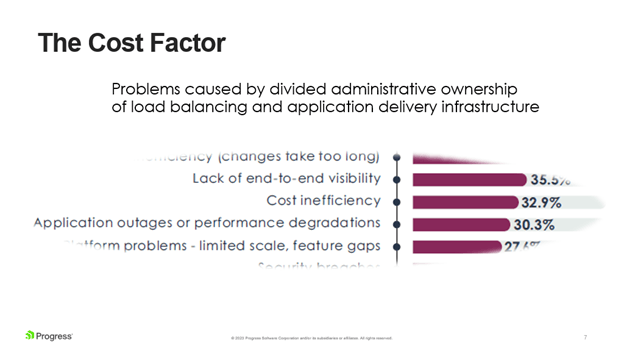Load balancers and application delivery controllers (ACDs) are a critical part of application infrastructure. To keep up with the rigor and latest technological demands, it is imperative to have a highly scalable, ultrareliable and secure load balancing architecture strategy.
In this webinar, Maurice McMullin walks through the evolution of load balancing and explains the importance of IT organizations adopting a cross-functional approach. This blog and the ‘Why You Need to Get DevOps and NetOps on the Same Page’ webinar discuss:
- The evolution of the load balancing and application delivery controllers (ACD)
- Past: Data center technology
- Future: DevOps and NetOps should take a unified approach
- Why a unified approach is key to modernizing your load balancing strategy
- How to create a unified DevOps and NetOps cross-functional strategy
- How to modernize and unify load balancing architecture
- Close skills gaps through cross-silo partnerships
- The importance of integrating security operations
- Benefits of adopting a unified approach across data centers and public cloud environments
A great resource for analyzing the world of DevOps and NetOps is a recent research report from Enterprise Management Associates (EMA)’s Load Balancing in a Hybrid and Multi-Cloud World. The research dug into how organizations manage and operate their load balancing assets and uncovered some interesting insights on how DevOps and NetOps teams are often operating independently.
EMA found that smaller, midmarket organizations with 1,000 to 3,000 people are more likely to have a siloed approach to DevOps and NetOps, as the below graphic reveals.
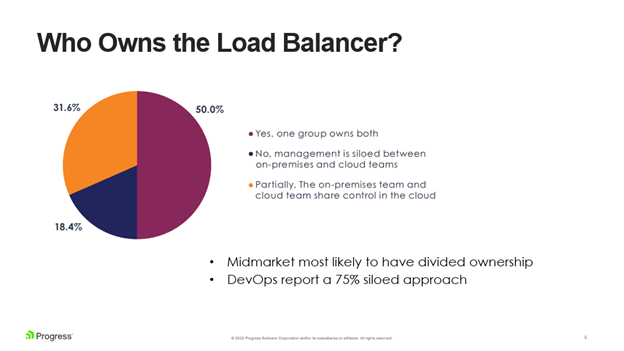
Respondents who work in DevOps were much more likely (75%) to report a completely siloed approach to load balancing, suggesting that DevOps groups are often using their own load balancing platforms while developing and testing applications. Once they roll applications into production in a hybrid cloud, the infrastructure team will demand use of a standard load balancing platform.
This obviously leads to delays in getting new applications deployed, but also potentially additional costs as DevOps teams rework their load balancing implementations. There are several other problems, as you can see below.
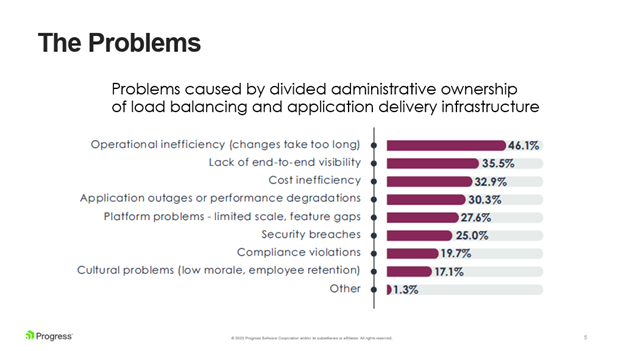
The big issue identified is inefficiency – and this inefficiency can be as simple as identifying who is responsible for what or the complexity of ensuring that changes by one group don’t impact the other.
The network team—and I’m including the security team here—have traditionally been focused on network availability and security: keep the lights on, get as many nines in the uptime as possible and protect the network.
And while they may use automation and ‘infrastructure as code,’ the cultural mindset can still be to proceed with caution. This is where DevOps and NetOps need to get aligned–where both groups have a cultural and technical exchange and a unified and shared approach that delivers better agility around network and application changes.
Another point on inefficiency is fragmentation of the tools and technology. The EMA report looks at this from a multi-cloud, hybrid-cloud point of view and finds that 57% of respondents use virtualized load balancing solutions from their on-premises vendors rather than the cloud native solutions. The use of multiple load balancing solutions for application delivery increases their complexity and by extension operational inefficiency. Having a unified application delivery approach, based on the same vendor for on-premises and cloud, not only applies to operational inefficiencies but also feeds into the second point – visibility.
DevOps and NetOps groups have a different lens through which they will view the environment–and will use toolsets that deliver that lens to them. However, fragmentation of roles means that the end-to-end visibility may be missing.
Benefits of a Unified Approach to Load Balancing
As we go down this list we can see really impactful problems–performance, security and compliance. Let’s look at how a unified approach to load balancing can make it easier to get DevOps and NetOps on the same page.
Before we delve into the detail, note that there is a bigger picture here. A big issue is getting the culture of the teams aligned. This is way beyond the scope of what we are covering here today. So rather than try and boil that ocean, we will concentrate on the pivotal role the correct load balancing strategy can play in getting the teams aligned.
Aside from the operational inefficiency costs, a multi-cloud/ multi-vendor approach can be significantly more expensive than a traditional load balancer.
For instance, there is fragmented purchasing which can happen even within a single cloud provider. Folks buy services on-demand and organizations miss out on the economies of scale and efficient licensing schemes such as pooled licenses. And we all have the stories of the cloud services spawl, with groups acting independently and the overall organization paying top dollar for services.
Pay per use features is another issue. Some cloud providers charge additional rates for features such as custom web application firewall (WAF) rules–which get very expensive very quickly on AWS. Also, services such as authentication are often metered with usage costs per authentication or captcha delivered. These are all embedded in the load balancer functionality–simplifying budgeting and actually costing less.
Understanding cloud costs is challenging. Cloud platforms use multiple metrics to determine costs, and an increase in a simple metric such as number of WAF rules or the number of authentications can create significant spikes in cost.
This is where the traditional load balancer excels–the only metric is throughput with as many WAF rules as you want, as many authentications as you want–no surprises. And using flexible licensing options such as pooled licensing allows scaling on demand and maximizes purchasing power to get the best value.
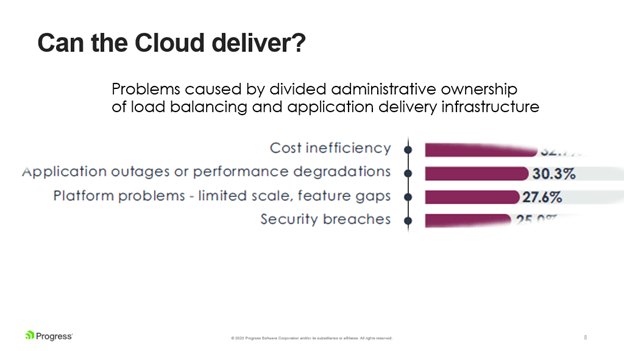
Challenges with scaling and performance with cloud-based solutions has an impact on a significant cohort of the organizations surveyed. Again, fragmentation of responsibility magnifies these issues as teams start finger pointing.
With integrated DevOps and Netops, the organizational responsibility issues can be resolved, but the challenge remains of having visibility and control across different cloud architectures for application delivery. This is where having a unified approach to multi-cloud application delivery comes in.
EMA associates in their report explicitly call out the inherent problems with cloud provider load balancing and recommend the use of virtual load balancers from a focused vendor. The report shows many organizations already have taken this approach.
For instance, 38% of single cloud organizations are already using alternative virtual appliances and this number rises to 73% where three or more clouds are in use.
This indicates that many organizations are already seeing the value of getting a unified approach to their load balancing technology and infrastructure, thus greatly simplifying the challenge of getting DevOps and NetOps groups–and security–on the same page.
An interesting point in this data is that many adopt load balancers that lack advanced features–when they could use a more complete and integrated solution that covers not only availability and performance, but also security capabilities and multi-site/multi cloud services. With advanced load balancing solutions, complexity is reduced as teams do not need to find external solutions to plug functionality gaps. Less complexity, less cost and less chance of introducing security holes.

Siloed DevOps/Netops also suffer from skill gaps. This is not a big surprise as organizations have challenges hiring and retaining skilled staff.
Having multiple application delivery and load balancing platforms is a multiplier of this problem.
We can see that conflict between teams is very high at 43%. This is inevitable when teams are operating independently and have disconnected processes and systems for management and monitoring.
DevOps, network and security teams must learn how to work together on a common platform. This will also help drive best practices.
Just to add here, security needs to be woven through all approaches to application delivery, and getting security roles acting together is really key to success.
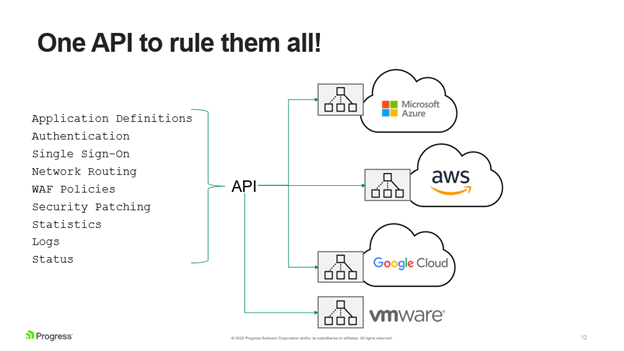
The starting point for aligning DevOps, NetOps and security–let’s not forget security–is a unified approach to load balancing. Unifying your load balancing strategy gives a single consistent API for DevOps, NetOps and Security teams–across all platforms. Here are other benefits:
Avoid cloud fragmentation complexities. This can deliver in-team benefits.
Common skillsets – makes it easier to train.
All application delivery can be centrally defined, consistently applied and integrated with logging and monitoring toolsets via the same tooling.
One source of truth, allowing better operational efficiency, standardized processes and less prone to errors and consistency.
Better operational efficiency.
Better visibility across all clouds and on-premises.
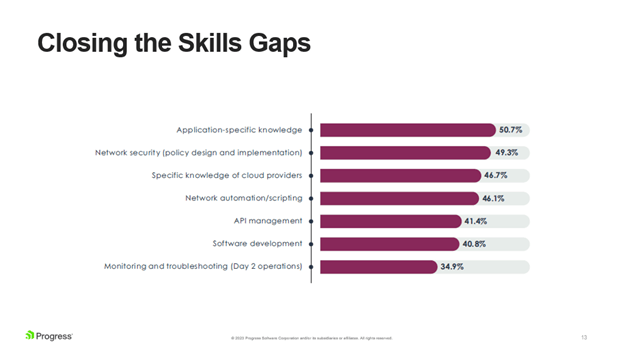
A key element of success is closing the skills gaps. The table above shows there are challenges across all skills areas. These can be addressed by bringing teams together to share skills and insights when working on a common application delivery framework. Here are three benefits to that approach:
The DevOps folks can impart application insights to the network and security teams.
DevOps teams can gain insight on security challenges.
Cloud specific load balancing challenges are minimized.
Bringing DevOps and NetOps together is an organizational challenge. It may be difficult as teams are entrenched in their own view of the world, but the benefits can be significant and lead to more efficient delivery of services and a better experience for users.
Learn More About DevOps and NetOps Synergies Through Team Integration
(Maurice McMullin contributed to this report.)


